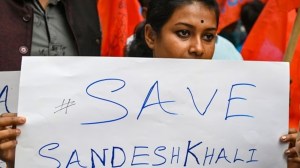- India
- International
Express View on IMD’s heat wave alert: Act Now
Alert should spur local-level strategies, help create robust data to protect the most vulnerable.
 In recent years, studies have underlined the need to fine-tune the maximum temperature-based criteria to declare a heat wave.
In recent years, studies have underlined the need to fine-tune the maximum temperature-based criteria to declare a heat wave.The effects of climate change on the Indian summer have been obvious for at least a decade. In most parts of the country, the spring season has shrunk. In 2022, the country experienced its hottest March since 1901. Last year, too, heatwaves started in early March, and many areas reported temperatures that were higher than average. This year, several parts of south India experienced a hotter-than-usual March. Climate change is also increasing the frequency and intensity of extreme weather events. On Monday, the India Meteorological Department (IMD) warned that heatwave spells could last 10-20 days, instead of four to eight days. The health effects of heat waves is still a nascent field of study and data on mortality caused by it varies — the IMD, National Disaster Management Agency (NDMA) and National Crime Records Bureau cite vastly divergent figures. However, experts concur on the need to put in place measures to protect the most vulnerable from the scorching temperatures.
In one lethal week in May 2010, a heat wave claimed more than 800 lives in Ahmedabad. The tragedy pushed the city’s municipality to partner with the Indian Institute of Public Health and American academies to develop the country’s first heat action plan (HAP) in 2013. It focused on creating an early warning system, increasing the capacity of healthcare professionals, promoting adaptive measures in workplaces and creating awareness. Experts reckon the strategy has saved 1,000 lives every year. Since then, more than 20 states have coordinated with the NDMA to develop HAPs. However, critics say that these policy instruments have, by and large, remained on paper. They are not updated regularly and do not have regular budgets and are impervious to the needs of the most vulnerable — families living in slums or poorly-constructed houses, the elderly, pregnant women, and those who work outdoors. Under-resourced municipalities do not have the wherewithal to deal with the challenges posed by the elements. Last year, a sunstroke-related tragedy in Navi Mumbai, which claimed 13 lives, shone a light on the need for more local-level weather observatories — the satellite city sources its data from a station about 30 km away.
In recent years, studies have underlined the need to fine-tune the maximum temperature-based criteria to declare a heat wave. There is a growing realisation that thresholds to declare heat waves must be tailored for local conditions — for instance, factoring in humidity while estimating the stress exerted by extreme heat. Dealing with climate change will require several course corrections. There’s no time to be lost after the IMD’s latest alert.
EXPRESS OPINION
More Explained
Apr 04: Latest News
- 01
- 02
- 03
- 04
- 05
































